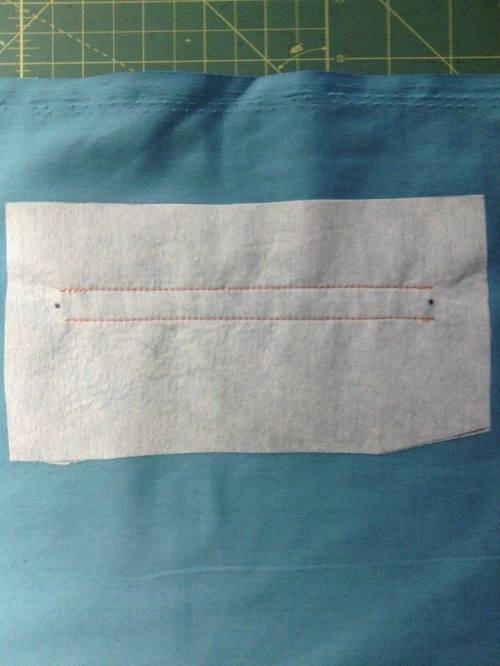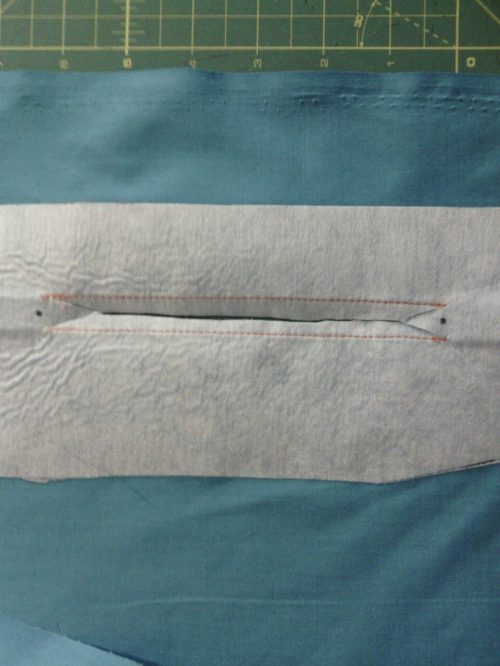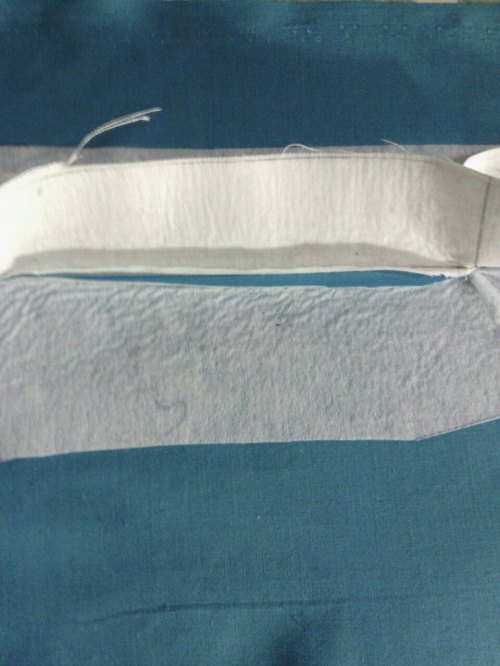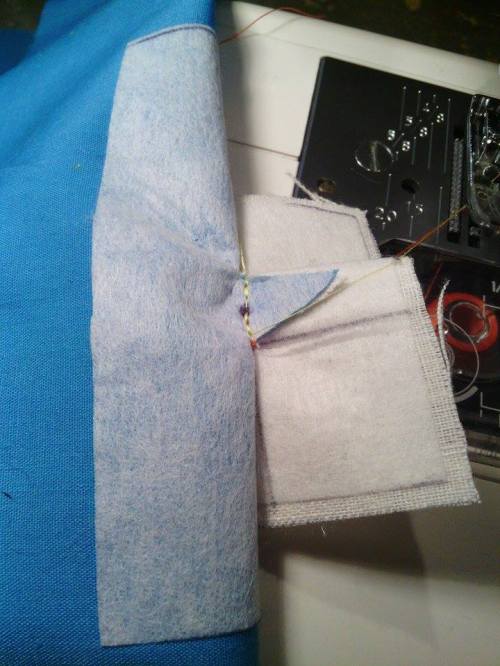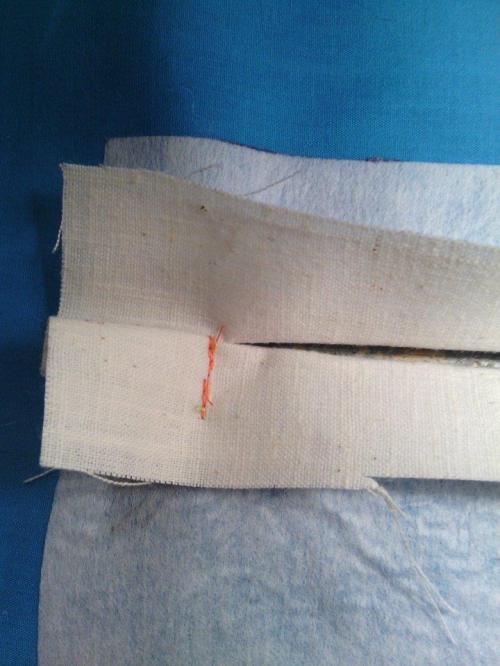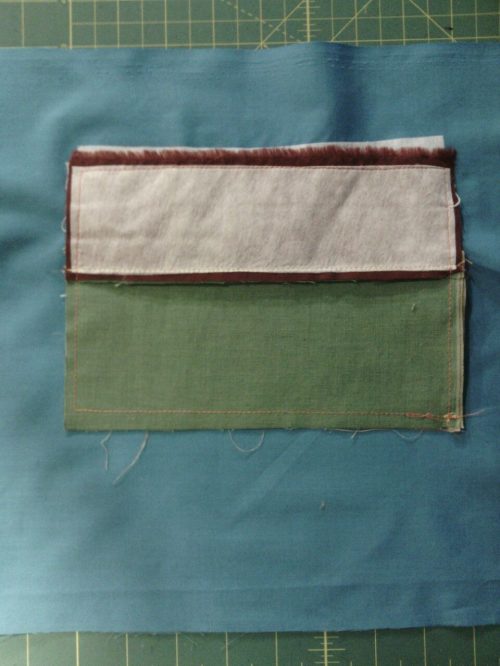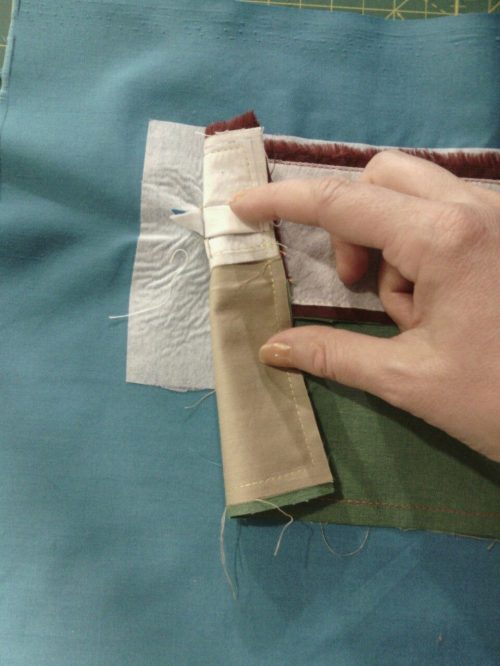Here is how to sew a single welt pocket, as in a pocket that has a single welt, not a double welt like I’ve shown in my men’s vest posts. It’s a bit easier than a double welt, but not by much. Whether you use a single or double welt pocket on a vest, a pair of pants or whatever is pretty much up to you. If you’re doing menswear, sometimes you go with what they’ve been doing for years, but if it’s for yourself, do what you want, I guess. I have used woven fabrics. I have never done this with stretch wovens (there are plenty of stretch woven pants with single welt pockets), nor with knits (I’ve never seen that, but that doesn’t mean it doesn’t exist).
I apologize that the photos aren’t great. I used my phone, which doesn’t give the best photos. Some day I’ll have someone do better photos, at least of all these different seams, darts, pockets, etc.
These instructions are from Fashion Incubator.
Please comment, ask questions, etc.
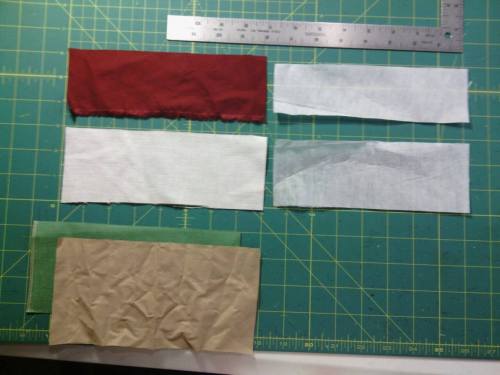
Once you know how wide you want the finished pocket opening to be, cut the welt (the off white piece on the left) to be 2″ longer than that. If you want a pocket with a 6″ opening, cut the welt 8 x 3″. Cut an underwelt the same length but 1/2″ shorter. In this case, it’s 8 x 2 1/2″ and the maroon piece. Cut a piece of interfacing for the welt 1/4″ smaller than the welt (7 3/4″ x 2 3/4″) and a piece for the underwelt 1/4″ smaller (7 3/4″ x 2 1/4″); they’re the white pieces on the right. Cut the pocket bag pieces to be the same width (8″ in this case) and the depth you need. For the vests I made, they’re only 2-3″ deep. For a breast pocket, at least that deep, but maybe deep enough for a pen or a glasses case. The green pocket bag piece is the shorter one, 3 1/2″, and gets sewn to the underwelt. The tan piece gets sewn to the welt and is 4″.
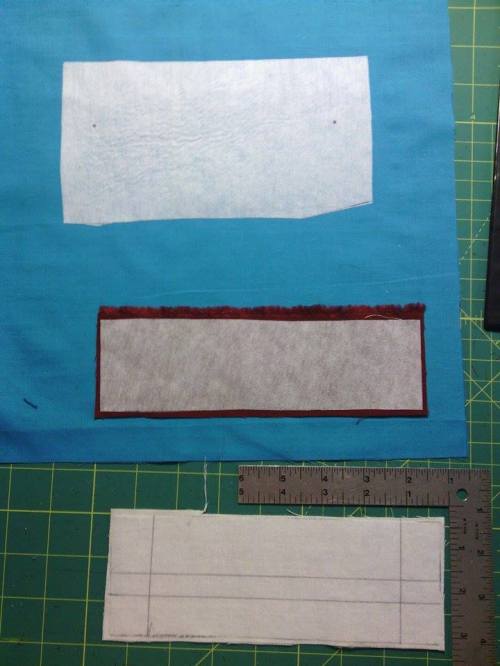
Fuse the interfacing to the welt and underwelt. If your garment doesn’t already have interfacing where the pocket needs to go (you would have already put interfacing on a men’s jacket or vest or you should have), add a piece where the pocket will go. It doesn’t have to be as large as I’ve shown, but it does need to be the same width as the welt. If you don’t have or don’t want to use fusible interfacing, use sew on kind (actual interfacing or some fabric that would work). Mark on the interfacing of the garment (the blue fabric) where the ends of the pocket will go (my dots are 6″ apart). Mark on the wrong side of the welt a set of lines (use a disappearing ink or chalk, not the ball point pen I used for this sample). The marks for the welt are 1″ from each end (the vertical lines) and two parallel horizontal lines. The lower line is 1″ from the bottom of the fabric and the upper line is 1/2″ from that. Now rotate the welt 180 degrees so that the long line 1″ from the edge is at the top.
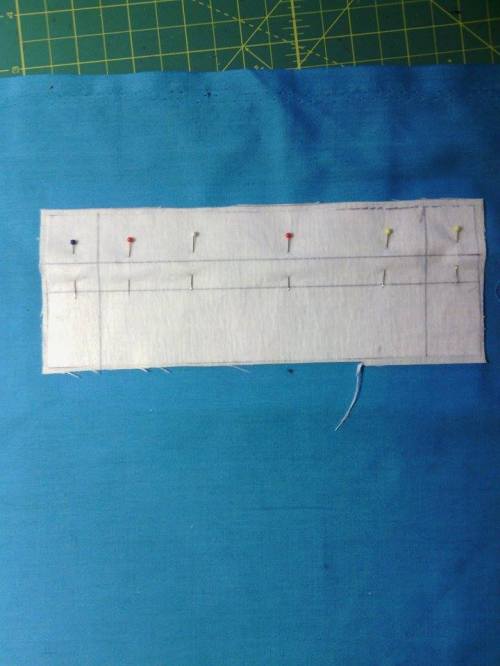
Put pins through the dots on the garment interfacing to mark where the pocket goes on the right side. Put the welt on the garment, right sides together. Pin it like this.
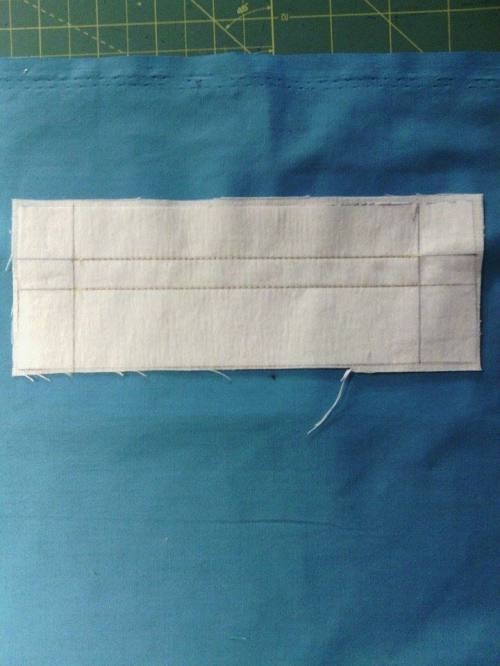
Stitch on the two long parallel lines. Start at one of the short lines and end at the other. Make sure your stitching ends up the same length. Oops, the yellow thread doesn’t show up very well.
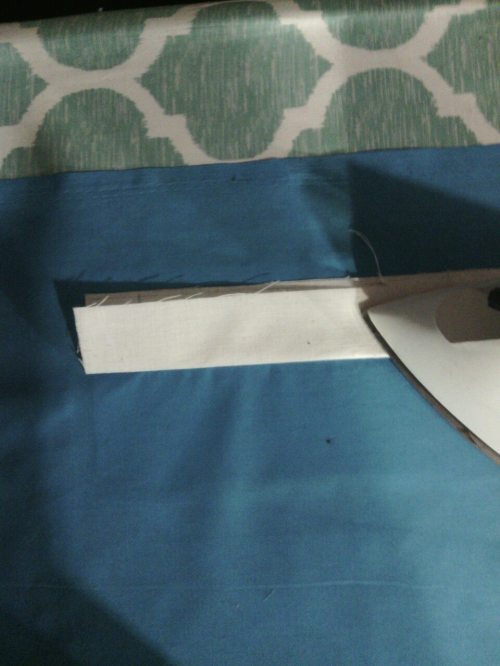
Press the long lower side away from you at the stitching. Also press up the ends that aren’t stitched.

Cut between the lines you stitched. See how the cutting ends up angling toward the stitching at the ends? You want to cut it this way. Go up to but not through the stitching.
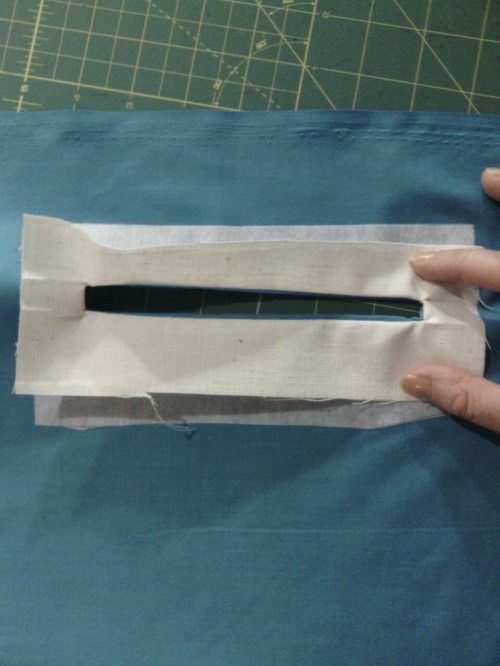
Turn the welt to the inside of the garment. Check both sides. If you haven’t cut far enough, the corners of the opening will look puckered. You can snip a bit more.
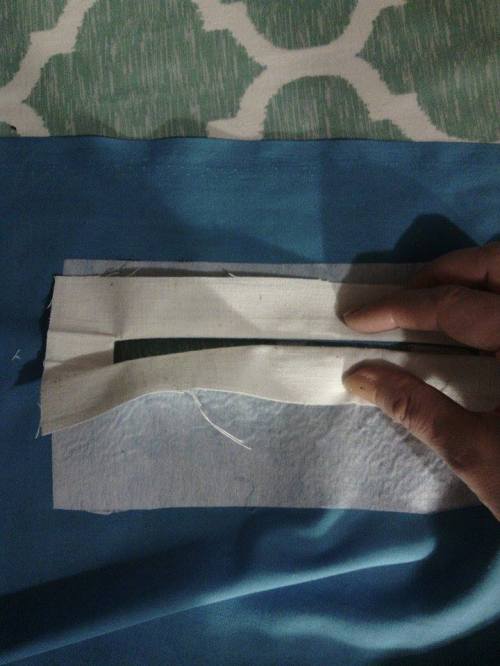
Press the upper half of the welt up, pulling a bit to the inside, as you would a facing. Fold the lower half so it will fill the opening and try to keep it an evenly straight line. Don’t fold too far up or you’ll have a hard time getting your hand into it. If I had known, I would have used a cotton that would have held the pressing a bit better.
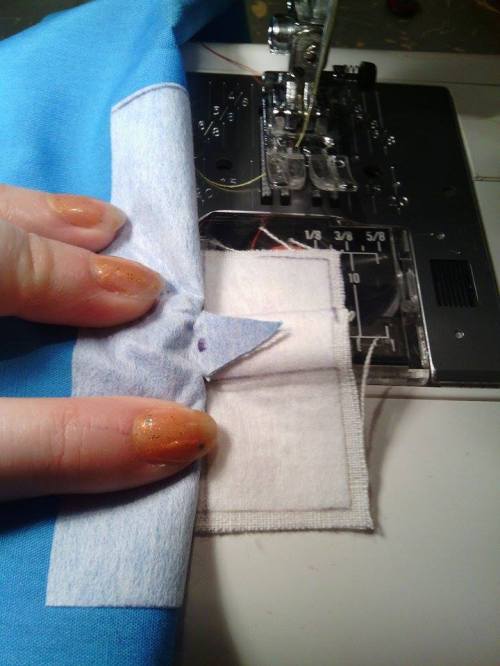
Pull the garment aside like this with the welt right side down. That triangle point is what you just cut. Stitch on the line that was pressed.
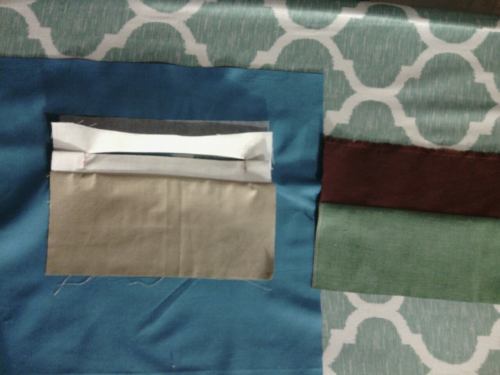
Here, the pocket bags are sewn to the welt and underwelt and pressed. Since most pocket bags are lining fabric, which is usually fairly light, press the seam allowances toward the lining, away from the welt and underwelt. (The gray between the welt and the blue is just a shadow.)
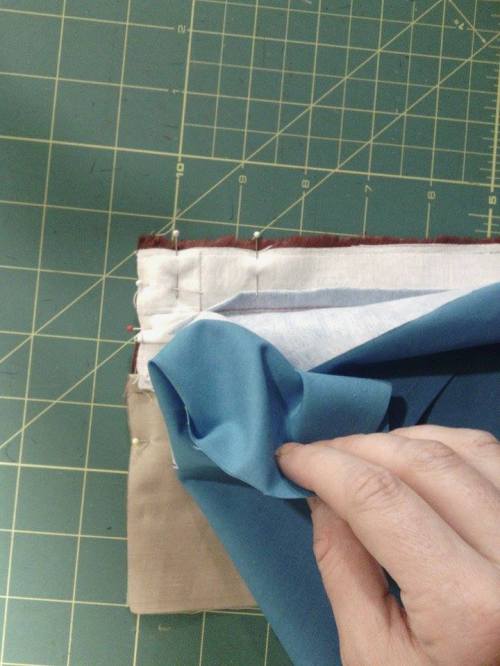
With the garment fabric on top, pin the underwelt/pocket bag unit to the welt/pocket bag unit, at least at the top corner. Start stitching at the bottom of the pocket bag. Go up to the top of the welt, pivot, go to the other end, pivot, go down the other side, pivot, and go across the bottom. Use a 1/4″ seam allowance.
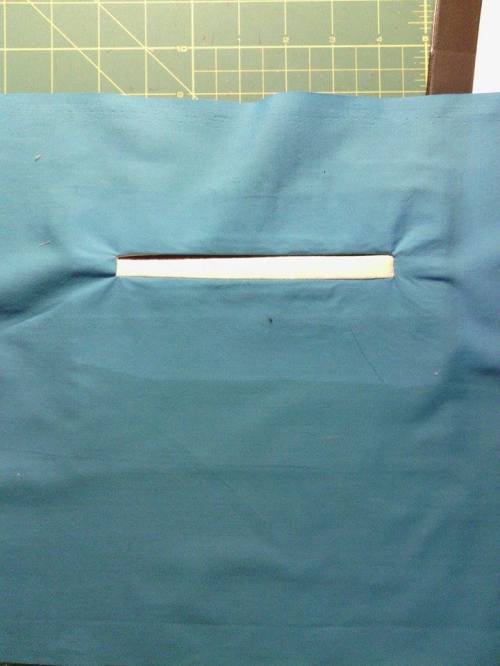
Here is the finished pocket from the front. As you can see, I wasn’t that careful with pressing the fold in the welt evenly. My ends still pucker a bit, but that is because the scrap I used for the welt is heavier than this blue poly-cotton.

